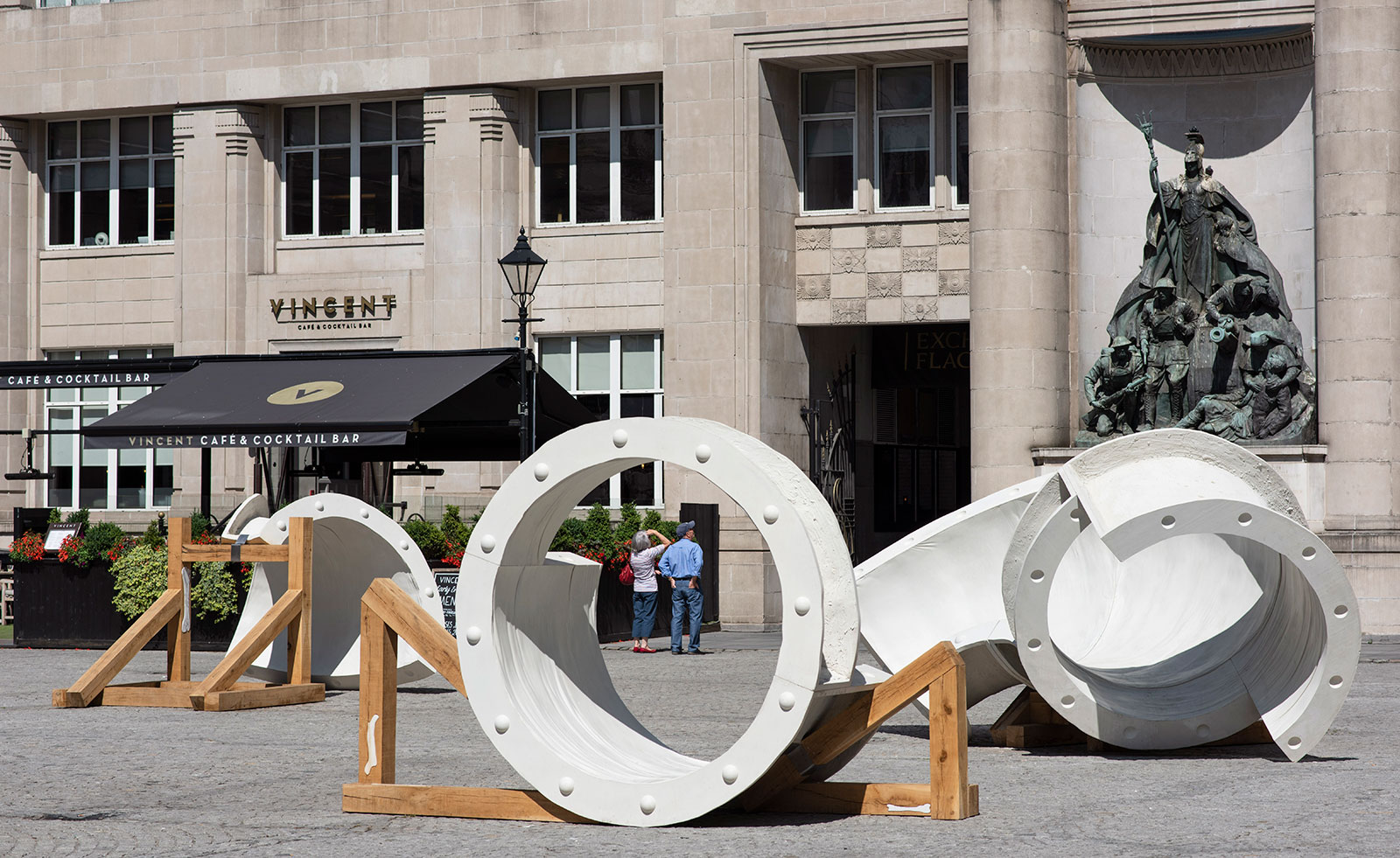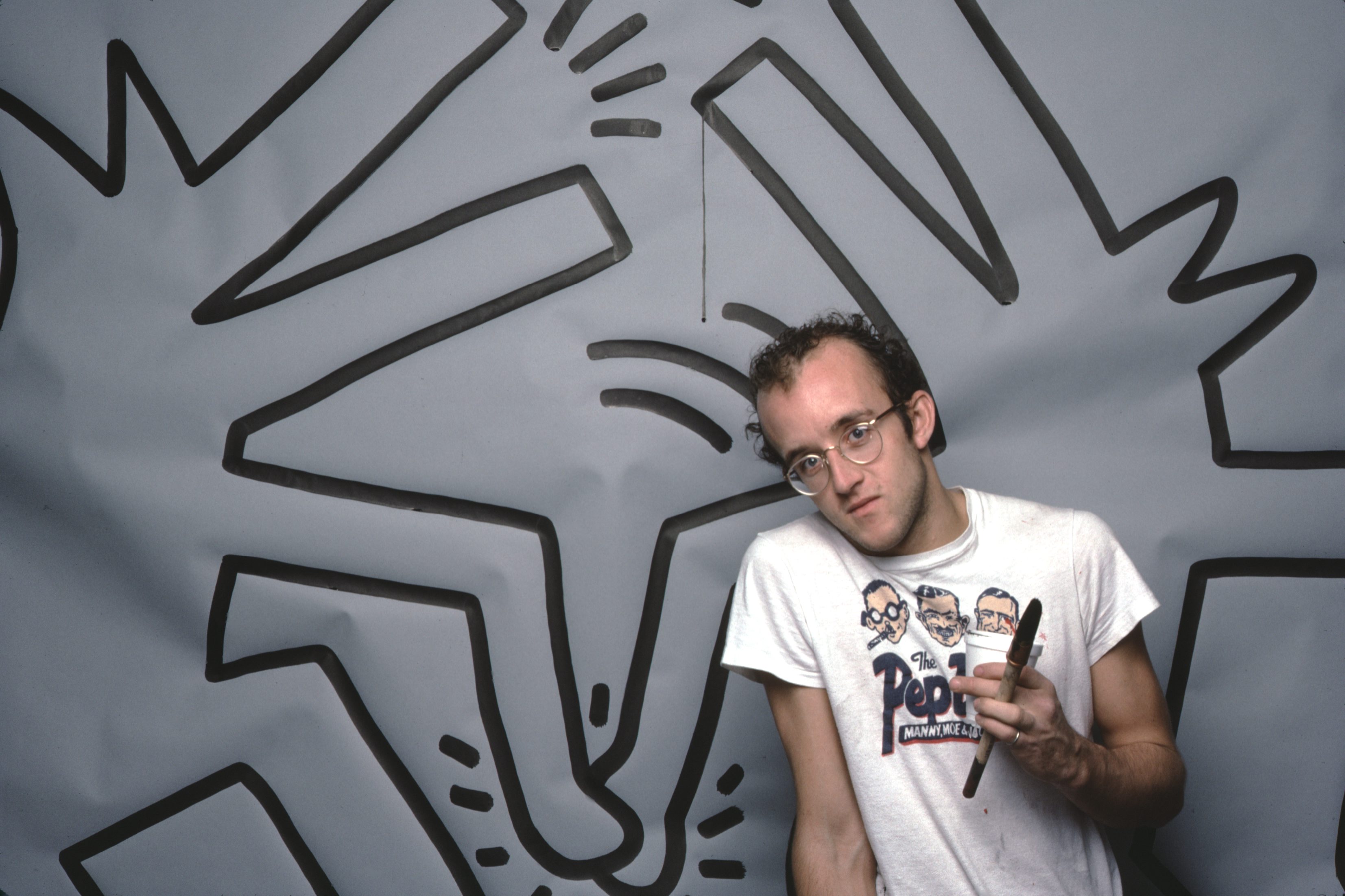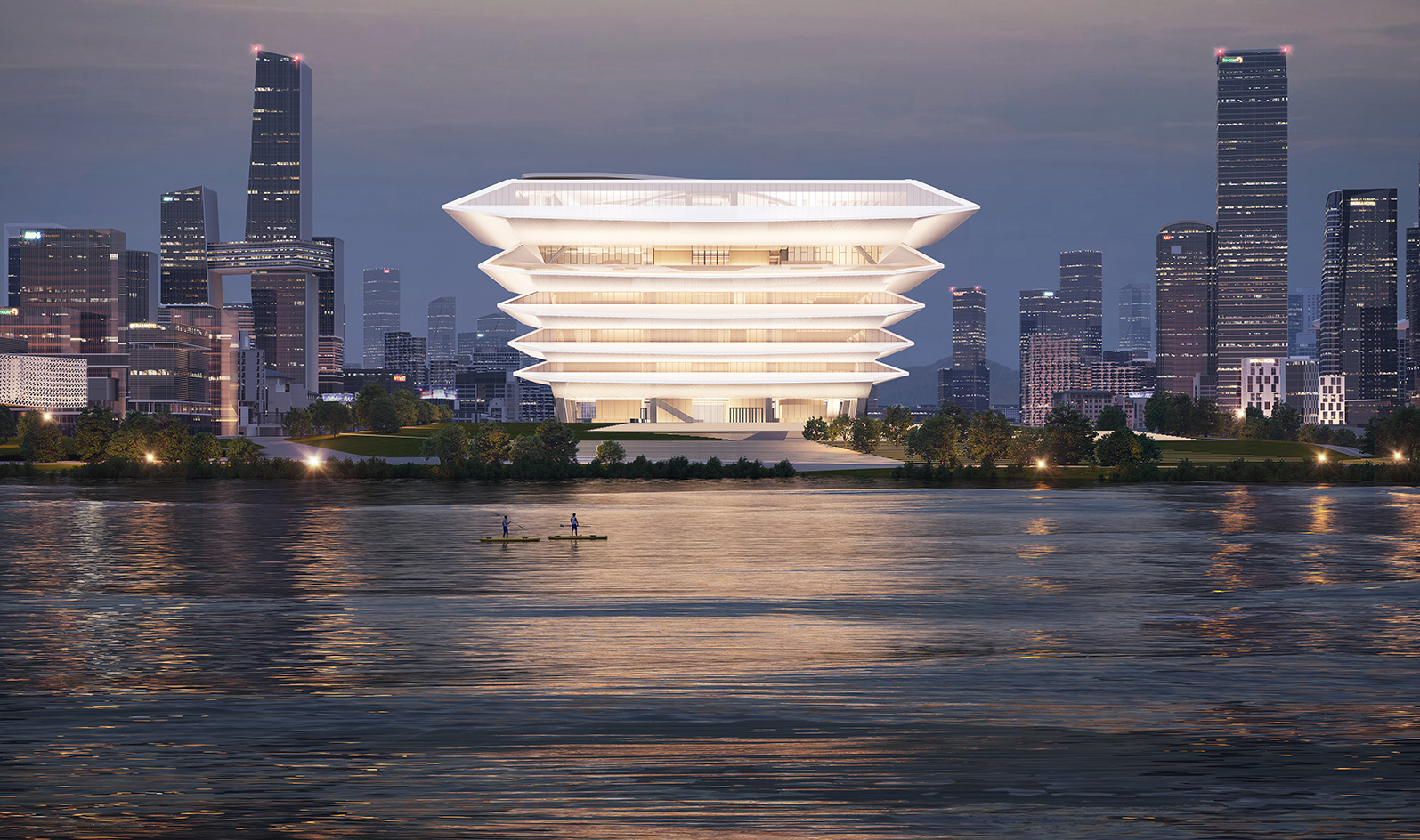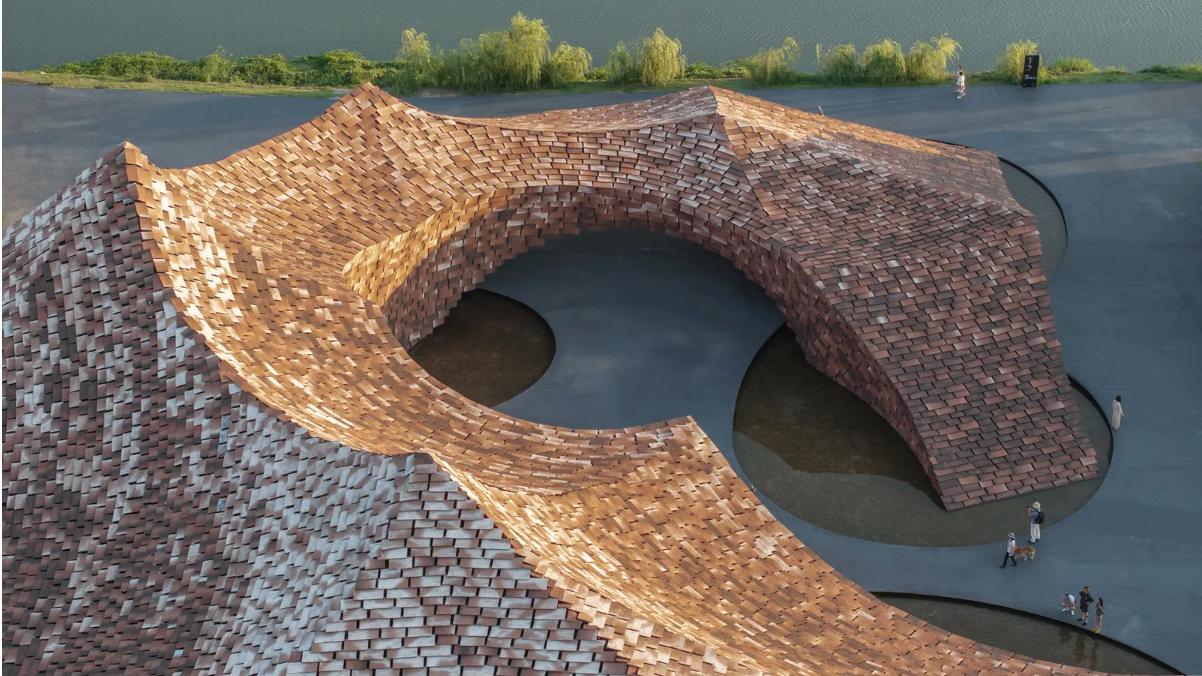Holly Hendry wins inaugural Experimental Architecture Arts Foundation Award

The Arts Foundation announced its very first award for Experimental Architecture at a ceremony at the ICA last night. The Foundation was set up in 1993 as a charity to support all facets of artistic production, from animation to literature, photography to product design and painting. This year marks the debut of Experimental Architecture as a category, reflecting the many ways in which spatial design now manifests itself, from physical spaces to virtual ones.
Holly Hendry won the debut award, beating her follow finalists Chris Hildrey, Lawrence Lek and Public Practice. The winner was chosen from a long list by a judging panel of professionals, including the architect Amanda Levete, writer and curator Justin McGuirk and Theodore Spyropoulos, director of the Architectural Association's Design Research Lab.

Cenotaph, 2018, by Holly Hendry, installation view at Exchange Flags
Hendry's work reflected one of the jury's main concerns – that experimental architecture has evolved far beyond the ‘paper architecture' and theorising of the 1960s, 70s and 80s. Today, opportunities abound, from installations real and virtual to built spaces, research projects and sculptures. Hendry's fellow finalists included the computer graphic specialist Lawrence Lek, with his explorations of virtual spaces, and Public Practice, a collective set up by Pooja Agrawal and Finn Williams to crunch the data and connections that link the public sector to design. Inspired by the visionary and forward-thinking social architecture of the post-war era, Public Practice want to empower those on both sides of the relationship, helping councils make progressive choices and urging their residents to demand them.

Public Practice was a fellow finalist, the aim of this collective practice is to crunch the data and connections that link the public sector to design.
Finally, there was the work of Chris Hildrey, an architect who used his year as Designer in Residence at London’s Design Museum to create ProxyAddress, an ongoing project that pairs homeless people with permanent addresses, rooting them within the system to help them get back on their feet. Ultimately, Henry's abstract, unusual sculptures won the day. Her work uses architectural elements like ducts and pipes, but plays with scale, form and location to create strange, abstract shapes that might or might not be part of a building. Part architecture, part art, this is work that blurs boundaries, setting the tone for further exploration of contemporary architecture's wilder shores.
Receive our daily digest of inspiration, escapism and design stories from around the world direct to your inbox.
Jonathan Bell has written for Wallpaper* magazine since 1999, covering everything from architecture and transport design to books, tech and graphic design. He is now the magazine’s Transport and Technology Editor. Jonathan has written and edited 15 books, including Concept Car Design, 21st Century House, and The New Modern House. He is also the host of Wallpaper’s first podcast.
-
 Modern masters: the ultimate guide to Keith Haring
Modern masters: the ultimate guide to Keith HaringKeith Haring's bold visual identity brought visibility to the marginalised
-
 Discover a hidden culinary gem in Melbourne
Discover a hidden culinary gem in MelbourneTucked away in a central Melbourne park, wunderkind chef Hugh Allen’s first solo restaurant, Yiaga, takes diners on a journey of discovery
-
 Nina Christen is the designer behind fashion’s favourite – and most playful – shoes
Nina Christen is the designer behind fashion’s favourite – and most playful – shoesShe’s created viral shoes for Loewe and Dior. Now, the Swiss designer is striking out with her own label, Christen
-
 The RIBA Asia Pacific Awards reward impactful, mindful architecture – here are the winners
The RIBA Asia Pacific Awards reward impactful, mindful architecture – here are the winnersThe 2025 RIBA Asia Pacific Awards mark the accolade’s first year – and span from sustainable mixed-use towers to masterplanning and housing
-
 RIBA House of the Year 2025 is a ‘rare mixture of sensitivity and boldness’
RIBA House of the Year 2025 is a ‘rare mixture of sensitivity and boldness’Topping the list of seven shortlisted homes, Izat Arundell’s Hebridean self-build – named Caochan na Creige – is announced as the RIBA House of the Year 2025
-
 A revived public space in Aberdeen is named Scotland’s building of the year
A revived public space in Aberdeen is named Scotland’s building of the yearAberdeen's Union Terrace Gardens by Stallan-Brand Architecture + Design and LDA Design wins the 2025 Andrew Doolan Best Building in Scotland Award
-
 At the Holcim Foundation Forum and its Grand Prizes, sustainability is both urgent and hopeful
At the Holcim Foundation Forum and its Grand Prizes, sustainability is both urgent and hopefulThe Holcim Foundation Forum just took place in Venice, culminating in the announcement of the organisation's Grand Prizes, the projects especially honoured among 20 previously announced winning designs
-
 Archiboo Awards 2025 revealed, including prizes for architecture activism and use of AI
Archiboo Awards 2025 revealed, including prizes for architecture activism and use of AIArchiboo Awards 2025 are announced, highlighting Narrative Practice as winners of the Activism in architecture category this year, among several other accolades
-
 RIBA launches new awards – and for the first winners, we look to the Middle East
RIBA launches new awards – and for the first winners, we look to the Middle EastThe RIBA Middle East Award winners are announced today. The first of the organisation's two new territory awards series honours a women-only mosque, a luxury hotel, a city park and more
-
 RIBA Stirling Prize 2025 winner is ‘a radical reimagining of later living’
RIBA Stirling Prize 2025 winner is ‘a radical reimagining of later living’Appleby Blue Almshouse wins the RIBA Stirling Prize 2025, crowning the social housing complex for over-65s by Witherford Watson Mann Architects, the best building of the year
-
 Are these the best brick and ceramic buildings in the world?
Are these the best brick and ceramic buildings in the world?The biannual Brick Award is back. Discover the shortlist of innovative buildings across the world, designed by architects thinking outside the box